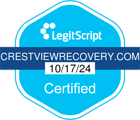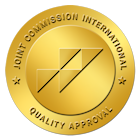At Crestview Recovery in Portland, Oregon, we offer specialized treatment programs that guide individuals through every stage of Xanax withdrawal. With our expert care, you can receive the help needed to regain control of your life and move toward long-term recovery.

Healing Begins Here

What is the Xanax Withdrawal Timeline?
Withdrawal often begins within hours of the last dose. Common symptoms during this phase include heightened anxiety, insomnia, irritability, and muscle tension. Interestingly, these symptoms mimic the very issues Xanax was prescribed to treat.
The most intense symptoms occur in this stage. They can include sweating, tremors, nausea, vomiting, headaches, and severe anxiety or panic attacks. In extreme cases, seizures may occur, which is why professional monitoring is essential during this phase.
Symptoms begin to subside during this phase, but some individuals may still experience fatigue, irritability, mood swings, and difficulty concentrating. Emotional and mental recovery becomes a key focus.
While the most acute withdrawal symptoms tend to fade in the first few weeks, some individuals may experience lingering effects, including depression, anxiety, cognitive impairment, and sleep disturbances. These symptoms can last for months but are manageable with continued care.
What are Xanax Withdrawal Symptoms?
- Sweating and Tremors
- Nausea and Vomiting
- Headaches
- Muscle Tension and Pain
- Seizures
Psychological symptoms can also be distressing, and may include:
- Intense Anxiety or Panic Attacks
- Insomnia
- Depression
- Irritability and Mood Swings
- Cognitive Difficulties
While symptoms are most severe within the first few days after discontinuation, they can be alleviated with proper care.


How Addictive is Xanax?
Using Xanax for extended periods can lead to physical dependence, where the body becomes reliant on the drug. Over time, higher doses are needed for the same effect, increasing the risk of addiction. Withdrawal symptoms such as anxiety, seizures, and irritability can make it difficult to stop without medical help.
Taking larger doses than prescribed can lead to tolerance, meaning the user needs more of the drug to feel its effects. This increases the risk of dependence, and long-term misuse can result in addiction. As tolerance builds, the risk of harmful side effects and overdose also grows.
Misusing Xanax—such as crushing, inhaling, or injecting it—significantly raises the risk of addiction. These methods allow the drug to enter the bloodstream faster, intensifying its effects. Misuse can also lead to life-threatening issues like overdose, especially when combined with alcohol or other substances.
What Factors Affect Xanax Withdrawal?
- Duration of Use: The longer an individual has been using Xanax, the more likely they are to experience intense withdrawal symptoms.
- Dosage: Higher doses can lead to a more severe withdrawal experience.
- Frequency of Use: Individuals who take Xanax frequently, especially in large amounts, are more likely to develop a dependence.
- Health Conditions: Pre-existing mental health conditions, such as anxiety, depression, or other mood disorders, can make withdrawal symptoms more intense.
- Support Systems: Having access to professional medical support and a strong personal support network can help reduce the severity of withdrawal symptoms and aid in recovery.
- Detoxification Method: Medical detox under the supervision of healthcare professionals can significantly improve safety and comfort during withdrawal. Home detoxification can be risky and is not recommended due to potential complications.

Is It Safe to Detox from Xanax Naturally or at Home?
At-home detox can be risky because individuals may not have access to the necessary medications or support if serious symptoms arise. A medically supervised detox program ensures safety and comfort, providing the best possible foundation for a successful recovery.

Medications Used to Treat Xanax Withdrawal Symptoms
- Benzodiazepine Tapering: In some cases, doctors may taper patients off Xanax by gradually reducing the dose. This helps minimize withdrawal symptoms and avoids potential dangers like seizures.
- Antidepressants: For individuals experiencing anxiety, depression, or mood swings, antidepressants can help stabilize mood and relieve symptoms.
- Anticonvulsants: To prevent seizures, anticonvulsant medications are sometimes prescribed during the withdrawal process.
- Beta-blockers: These can help reduce physical symptoms such as tremors, rapid heart rate, and sweating.
- Sleep Aids: If insomnia is a problem during withdrawal, short-term sleep aids may be prescribed.
- Gabapentin: Reduces anxiety, agitation, and sleep disturbances during withdrawal, and can prevent seizures.
- Buspirone: Non-habit forming anti-anxiety medication that helps alleviate generalized anxiety disorder during withdrawal.
- Lofexidine: Reduces physical symptoms like sweating and agitation by lowering norepinephrine levels.
- Vitamins and Supplements: B-complex vitamins, magnesium, and omega-3 support the body by reducing fatigue, irritability, and poor concentration.
The specific medications used will depend on the individual’s symptoms and needs, and they should always be administered under the supervision of a healthcare professional.
Coping with Xanax Withdrawal Symptoms
- Seek Professional Support: Enroll in a medically supervised detox program where experienced professionals guide you through every withdrawal stage.
- Stay Hydrated and Eat Well: Proper hydration and nutrition can support the body’s healing process during withdrawal and alleviate some physical symptoms.
- Practice Relaxation Techniques: Techniques such as deep breathing, meditation, and yoga can help reduce anxiety and improve overall mental well-being.
- Stay Connected: Lean on family, friends, or support groups during the withdrawal process. Emotional support plays a critical role in recovery.
- Exercise: Gentle exercise can help release endorphins and improve mood during withdrawal as long as it is done under appropriate guidance.
Treatment Options for Xanax Addiction
Our residential program provides 24/7 care in a structured environment. Clients engage in daily therapy sessions, including individual and group counseling, while focusing entirely on recovery without outside distractions.
Our intensive outpatient program offers a flexible treatment option for those stepping down from inpatient care or with strong support at home. Clients attend therapy several times a week while beginning to reintegrate into everyday life.
Many individuals with Xanax addiction also struggle with mental health conditions such as anxiety or depression. Our dual diagnosis program treats both issues at the same time, which is essential for lasting recovery.
Evidence-based therapies, including Cognitive Behavioral Therapy (CBT), Dialectical Behavior Therapy (DBT), and Motivational Interviewing (MI), help clients change negative thought patterns and build healthy coping skills.
After completing treatment, clients receive personalized aftercare plans that may include continued counseling, peer support groups, and relapse prevention strategies. The goal is to help every client build the foundation for long-term sobriety.






















